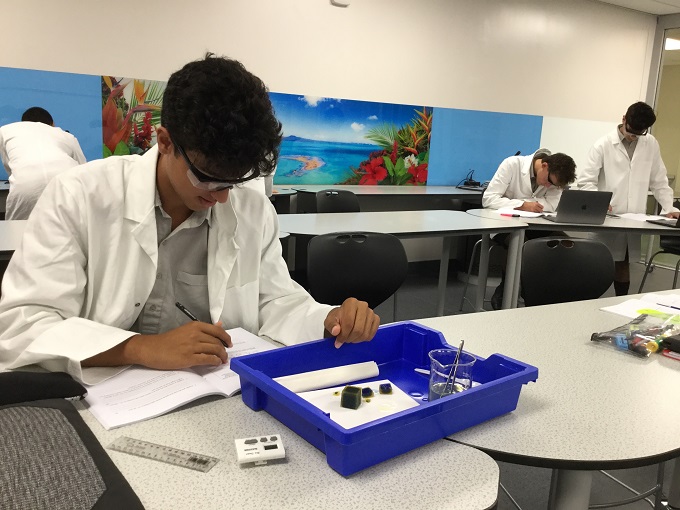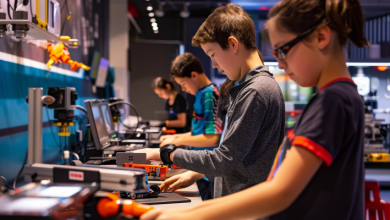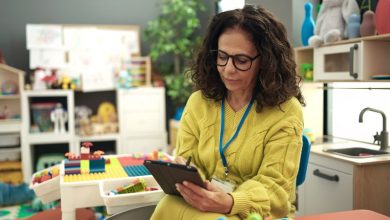Sparking curiosity with science lab design

The National Monitoring Study of Student Achievement raised eyebrows last year with its revelation that science learning progress slows aggressively as students enter college.
Most Year 4 students are reaching expected curriculum levels in science – a whopping 85 percent. Yet just 19 percent are doing so in Year 8. The progress gap was much smaller in other learning areas like reading, which recorded just a one percent difference. While this could indicate that Year 8 curriculum expectations for science are simply to high, it also presents secondary teachers with the challenge of helping incoming students ‘catch up’.
Perhaps this is why schools are taking a more adventurous approach to their science learning environments. Labs are now starting to get creative while meeting their health and safety requirements. Colourful, bright, thematic storage, and an organisation system that focusses on use, with labelled field trip kits and experimental toolboxes designed to spark curiosity and make managing the lab as easy as possible.
Don’t be afraid to personalise the science labs! When students see their work on display or can see themselves in the classroom design, they are more likely to feel engaged and respond confidently during lessons.
Industry guidance on science furniture and storage…
School News caught up with the general manager at Novalab Systems, Richard Sutcliffe, to find out what advice a science furniture and equipment supplier can offer schools on purchasing.
There are several key elements to consider when choosing the style of laboratory you need. Would a traditional, formal layout or a modern flexible design work best? Do you want to foster a teaching style that favours a ‘sage on the stage’ or more of a ‘guide on the side’? Is longevity of materials paramount or is a cheaper solution more important?
Flexible learning trends can certainly be applied to a lab block but labs do still need to meet certain criteria. Safety is obviously paramount, as is the ability of the teacher to be able to supervise the pupils in a safe manner. Practical spaces with services including gas, water, power and data are a huge requirement. There are also standards and guidelines to consider: depending on the scope of work required to get your new lab up and running, you may need to seek input from a specialist designer. This could be via a bespoke educational furniture manufacturer or an architect who specialises in the science lab field.
In terms of materials, the bench top and the sinks are where most damage or abuse takes place, so high quality materials should be prioritised here. The go to bench top material would be a chemically resistant compact laminate as this is an extremely robust material with excellent chemical resistance properties and is totally impervious to moisture ingress. Most good manufacturers would offer a 10-year warranty for the product. For sinks, I recommend looking into epoxy resin rather than stainless steel as it has great chemical resistance and will not rust. For storage, joinery made from a compact laminate will give serious longevity to the lab; it is impervious to moisture and doesn’t have any of those glued edges that pupils like to pick at.
If a flexible lab has been chosen, joinery cabinets can be suspended from a steel frame for easy cleaning switchability. Mobile units are also fast and flexible options.
It is strongly recommended that technician prep areas aren’t overlooked as this is where the chemicals are stored. Factor in lockable, specific dangerous goods cabinets as there are clear guidelines on where these units should be stored and the relative positioning of differing types of dangerous goods. Fume cupboards are key pieces of equipment and I recommend a fully extracted fixed fume cupboard for the technician area. Within the labs, a flexible, mobile fume cupboard that can serve several labs would be ideal.
Mobile fume cupboards do need docking stations in the labs but this is still an extremely economical solution for schools that want total flexibility.








